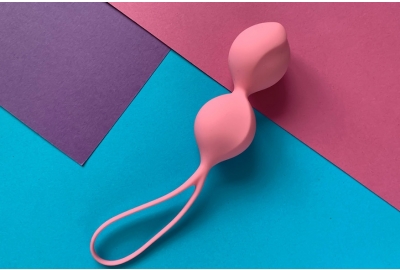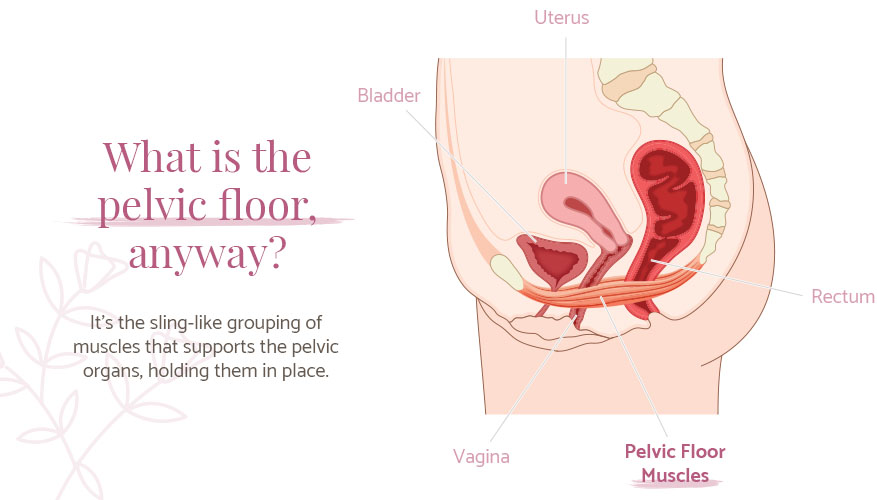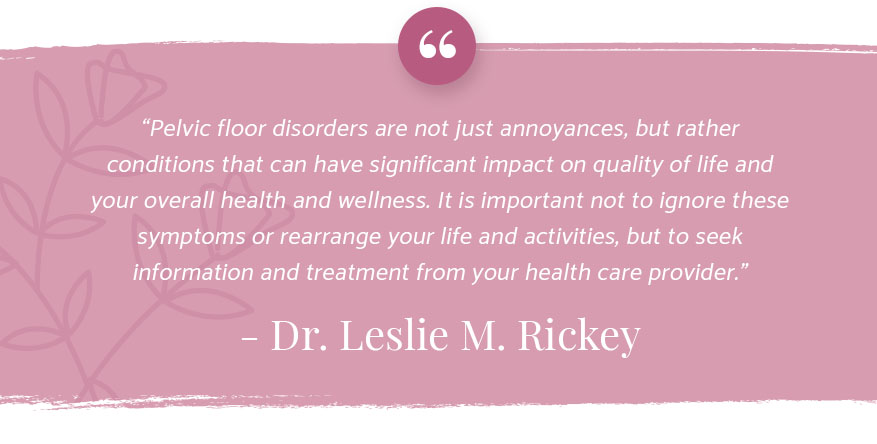
What Is Pelvic Floor Dysfunction?
Pelvic floor dysfunction refers to a group of disorders that occur when the pelvic floor weakens or becomes strained.
If you’re a woman, chances are you’ve heard the phrase “pelvic floor dysfunction” a time or two. That’s because changes in the pelvic floor are shockingly common among women. In fact, the experts say that about one in three women will experience a pelvic floor disorder in her lifetime. While the stats don’t make these conditions any less frustrating — or any less scary for first-time patients — they do mean we have a wealth of knowledge and treatment options available, from simple Kegel ball exercises to professional interventions. So don’t stress!
Learn How to Do Kegel Ball Exercises
In this guide, we’re covering all the basics of pelvic floor dysfunction, from what it is to the variety of treatment options available to people experiencing disorders.

What Is the Pelvic Floor?
Before we dive too deep into common pelvic floor dysfunction and why it occurs, let’s answer some basic questions. What is the pelvic floor, anyway? Simply put, it’s the sling-like grouping of muscles that’s responsible for supporting the pelvic organs, holding them in place and making sure they work as they should. The pelvic floor supports the bladder, vagina, uterus, and rectum while helping to maintain urine and stool continence.
What Does ‘Pelvic Floor Dysfunction’ Mean?
In general, the phrase “pelvic floor dysfunction” refers to a group of disorders that affects the performance of the pelvic floor. More commonly referred to as “pelvic floor disorders” or PFDs, they include bladder issues such as urine leakage, frequent urination, pelvic organ prolapse, and problems with bowel movements and stool leakage.
7 Signs of a Prolapsed Bladder
What Causes Pelvic Floor Dysfunction?
 “Dysfunction of the pelvic floor muscles and connective tissue due to weakness or strain can contribute to many pelvic floor disorders,” says Dr. Leslie M. Rickey, MD, a Yale Medicine female pelvic medicine and reconstructive surgeon and associate professor of Urology, Obstetrics, Gynecology, and Reproductive Sciences at Yale School of Medicine.
“Dysfunction of the pelvic floor muscles and connective tissue due to weakness or strain can contribute to many pelvic floor disorders,” says Dr. Leslie M. Rickey, MD, a Yale Medicine female pelvic medicine and reconstructive surgeon and associate professor of Urology, Obstetrics, Gynecology, and Reproductive Sciences at Yale School of Medicine.
But why do these muscles get weak or strained? A variety of factors can impact their strength and integrity, including pregnancy and childbirth or a history of pelvic surgery, says Dr. Rickey. She also notes that medical conditions such as obesity, diabetes, and cardiovascular disease can increase the risk of having a pelvic floor disorder or dysfunction.
How Does Pelvic Floor Dysfunction Impact Overall Health?
While it seems like a relatively small thing, pelvic floor disorders can have a profound effect on a person’s well-being and general health, both physically and emotionally. “Women with PFDs report higher rates of sexual dysfunction, sleep disruption, and interference with physical activity, social activities, and travel,” says Dr. Rickey.
On top of that, Dr. Rickey emphasizes that many women experience issues that go beyond the physical when they start to see signs of pelvic floor dysfunction, especially with regard to urinary incontinence. “Bladder issues — including leakage, infection, or overactive bladder — are associated with depression, weight gain, obesity, and decreased work productivity,” she says.

Seeking Treatment
Clearly, pelvic floor dysfunction can take a toll on one’s mental and physical health. The good news is that many pelvic floor disorders can be successfully treated through various therapies and interventions, including pelvic floor therapy.
What is pelvic floor therapy? Read the complete guide from Sofia & Grace for answers to all your questions, including how to do pelvic tilt exercises and more.
In short, this is a kind of hands-on therapy that involves doing routine pelvic floor exercises, either with the help of a professional physical therapist or with special tools such as Kegel balls. Such exercises are used to strengthen and tone the muscles in the pelvic floor to help improve control, helping with bladder issues, sexual dysfunction, and more.
Shop Our Kegel Ball Collection
All Hope Is Not Lost
If you’re one of the millions of women experiencing issues related to the pelvic floor, you’re not alone. Sofia & Grace is here to help you navigate the journey every step of the way, from determining what’s wrong to finding the right solutions to help you live a happy, healthy life no matter what.
Image Credits
Blamb/Shutterstock.com